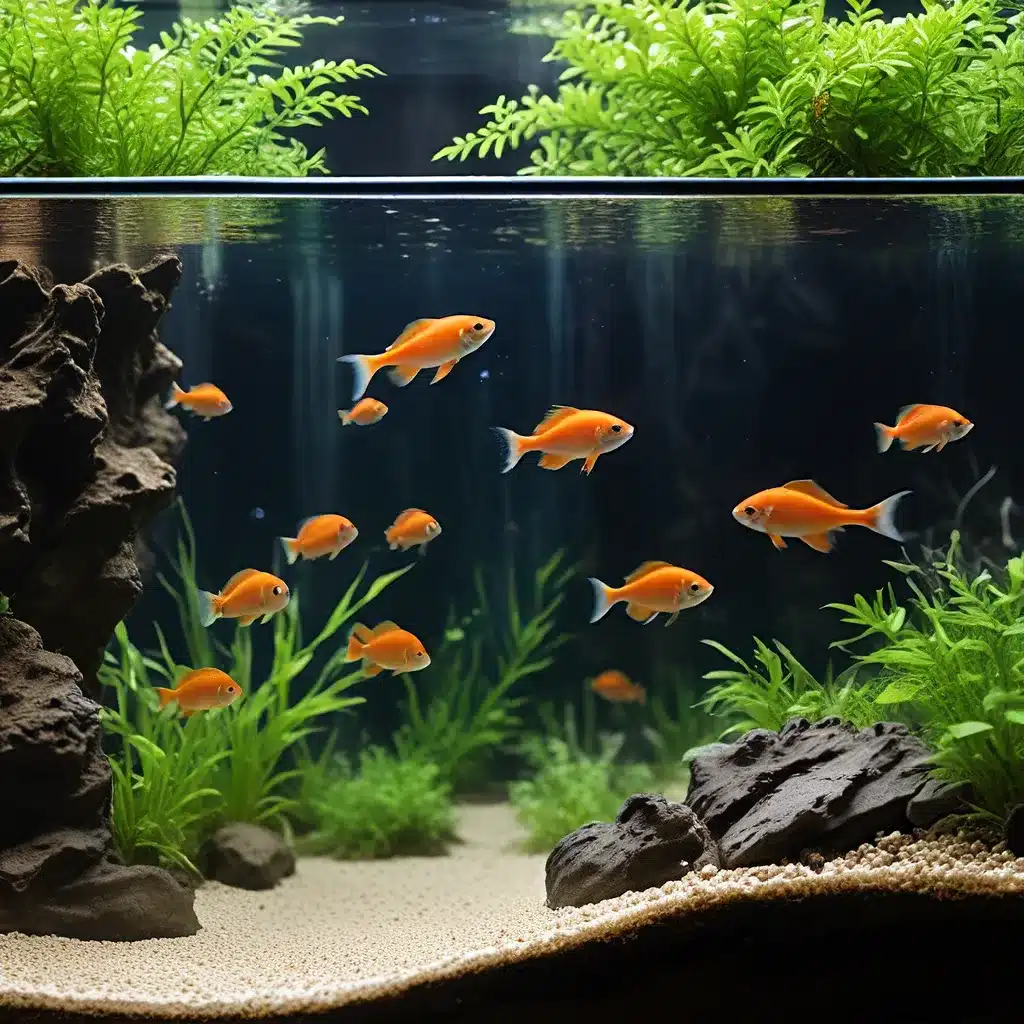
As the aquarium hobby continues to grow in popularity, it’s crucial that we as aquarists prioritize sustainable practices to ensure the long-term health and viability of our aquatic ecosystems. One of the most impactful ways we can do this is by implementing water recycling and conservation techniques in our home and commercial aquarium setups.
The Importance of Water Management in Aquarium Sustainability
Water is the lifeblood of any aquarium, and responsible management of this precious resource is paramount for maintaining healthy, thriving aquatic communities. Traditional aquarium maintenance often involves regular water changes, which can be resource-intensive and potentially detrimental to the environment if not handled carefully.
Sustainable aquarium practices aim to minimize water waste, reduce our carbon footprint, and promote the long-term sustainability of our aquatic habitats. By adopting water recycling and conservation techniques, we can not only conserve this limited resource but also create more stable, balanced tank environments for our finned friends.
Implementing Water Recycling Systems
One of the cornerstones of sustainable aquarium management is the use of water recycling systems. These advanced filtration and water treatment methods allow aquarists to recycle and reuse a significant portion of their aquarium’s water, reducing the need for frequent water changes and minimizing water consumption.
Reverse osmosis (RO) systems are a popular choice for aquarium owners looking to implement water recycling. These systems use a semi-permeable membrane to remove impurities, dissolved minerals, and other contaminants from the water, producing high-quality, ultra-pure water that can be safely reintroduced into the aquarium. By coupling an RO system with a deionization (DI) filter, aquarists can further refine the water, ensuring optimal water parameters for their aquatic inhabitants.
Another innovative water recycling technique is the use of closed-loop aquaponic systems. In these setups, the aquarium water is continuously circulated through a hydroponics system, where aquatic plants absorb and utilize the nutrients present in the water. The plants, in turn, help to filter and purify the water, which is then returned to the aquarium, creating a self-sustaining, closed-loop ecosystem.
Water Conservation Strategies
In addition to water recycling, there are numerous water conservation strategies that aquarists can implement to reduce their aquarium’s water footprint. These include:
-
Minimizing water changes: By closely monitoring water parameters and making smaller, more frequent water changes, aquarists can significantly reduce their overall water consumption.
-
Implementing evaporation-reduction techniques: Using covered aquariums, floating plants, or specialized evaporation-reducing devices can help to minimize water loss due to evaporation.
-
Utilizing efficient filtration systems: Advanced filtration technologies, such as canister filters and power filters, can effectively remove waste and maintain water quality with fewer water changes.
-
Selecting appropriate aquarium size: Choosing an aquarium size that is well-suited to the number and type of fish you plan to keep can help to optimize water usage and reduce waste.
-
Incorporating water-saving aquascaping: Carefully designed aquascapes that minimize the need for water-intensive decorations or substrates can contribute to water conservation.
The Role of Zoos and Aquariums in Sustainable Aquarium Practices
As leaders in the aquarium and conservation community, zoos and aquariums play a vital role in promoting sustainable aquarium practices. These institutions often serve as conservation experts and are at the forefront of implementing green business practices to minimize their environmental impact.
Many AZA-accredited zoos and aquariums participate in the AZA Green Practices survey, where they report on their sustainable initiatives, including the use of renewable energy, local food sourcing, and greenhouse gas emissions reduction. These facilities also share their experiences and best practices through the AZA Green Guide, which provides valuable resources for the aquarium community to learn from.
By highlighting the sustainable aquarium practices of these leading institutions, aquarium hobbyists and professionals can gain inspiration and practical guidance to implement similar strategies in their own setups, whether in a home aquarium or a commercial facility.
Embracing a Sustainable Aquarium Lifestyle
Sustainable aquarium practices are not just about conservation and environmental responsibility – they also benefit the health and well-being of our aquatic inhabitants. By implementing water recycling and conservation techniques, we can create more stable, balanced aquarium environments that are better suited to supporting vibrant, thriving ecosystems.
Moreover, embracing sustainable aquarium practices can have a positive impact on our broader environmental footprint. By reducing water consumption and waste, we contribute to the conservation of this precious resource, and in turn, help to protect the delicate aquatic habitats that our hobby relies upon.
As aquarium enthusiasts, we have a unique opportunity to lead by example and inspire others to adopt sustainable practices. By sharing our experiences, educating fellow hobbyists, and continuously seeking ways to improve our aquarium management, we can collectively work towards a future where sustainable aquarium practices are the norm, not the exception.
King Aquarium is committed to promoting sustainable aquarium practices and providing our customers with the tools and knowledge they need to implement water recycling and conservation techniques in their own setups. Browse our selection of high-quality aquarium equipment, including state-of-the-art filtration systems and water treatment solutions, to take the first step towards a more sustainable aquarium lifestyle.

